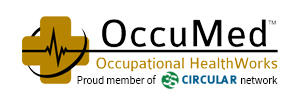June is National Safety Month! The Occupational Safety and Health Administration (OSHA) was first established in 1971 with the intention of protecting workers’ rights. One of the main rights they set out to protect was the worker’s right to a safe and healthy workplace. The legal regulations set by OSHA prevent injuries, illness, and death caused by unsafe workplace conditions; prior to the creation of OSHA, there were very few work-related regulations.
This information is taken directly from OSHA’s website:
Workers have the right to:
- Working conditions that do not pose a risk of serious harm.
- Receive information and training (in a language and vocabulary the worker understands) about workplace hazards, methods to prevent them, and the OSHA standards that apply to their workplace.
- Review records of work-related injuries and illnesses.
- File a complaint asking OSHA to inspect their workplace if they believe there is a serious hazard or that their employer is not following OSHA’s rules. OSHA will keep all identities confidential.
- Exercise their rights under the law without retaliation, including reporting an injury or raising health and safety concerns with their employer or OSHA. If a worker has been retaliated against for using their rights, they must file a complaint with OSHA as soon as possible, but no later than 30 days.
While employment in the United States has nearly doubled since 1971, workplace death rates have been reduced by over 66%. Injury and illness rates have decreased by 67%. Statistics like these make it clear that OSHA has had a tremendous impact on workplace safety over the last 48 years.
Safety is an essential priority across all industries, but in this post, we’d like to put special focus on the healthcare industry. Workers in hospitals, dental offices, clinics, nursing homes and more are exposed to a wide variety of health and safety risks on a daily basis. Furthermore, staff working conditions are directly related to patient safety as well.
What Safety Hazards Do Healthcare Workers Face?
The first step in improving safety conditions in healthcare facilities is to consider the various hazards that workers encounter. Healthcare professionals could potentially be exposed to dangerous drugs and chemicals, bloodborne pathogens, x-ray hazards, and other biological hazards. Healthcare professionals that have to physically lift patients to move them in and out of bed risk back and neck injuries. Workplace violence is also a risk factor that many healthcare professionals face.
How Can Safety Conditions Be Improved In Healthcare Organizations?
Compliance with safety standards increases when workers feel that their organization has a strong commitment to safety. In other words, institutions with a strong sense of “safety culture” tend to have lower illness/injury rates as well as hazard exposure incidents like blood/body fluid exposure.
A report released by the Institute of Medicine (IOM) in 1999 cited the following 5 factors as things that impact “safety culture”.
1) The actions management takes to improve both patient and worker safety
2) Worker participation in safety programs
3) The availability and accessibility of appropriate protective equipment
4) The influence of group norms regarding acceptable safety practices
5) The organization’s socialization process for new personnel
Safety Trainings Help Educated Workers and Facilitate Safety Culture
By holding safety trainings, you do more than educate workers on safety procedures. It shows workers that the organization is serious about health and safety. OccuMed offers a variety of workplace training programs including healthcare-focused trainings.
We have a number of training events this month, including First Aid Training, OSHA compliance training for healthcare workers, HIPAA compliance training, respiratory protection awareness training, and ergonomics awareness training. All of these events can be beneficial to encourage safety culture within healthcare organizations. See a list of our upcoming events with detailed descriptions here: https://occumedne.com/events-calendar/list/


